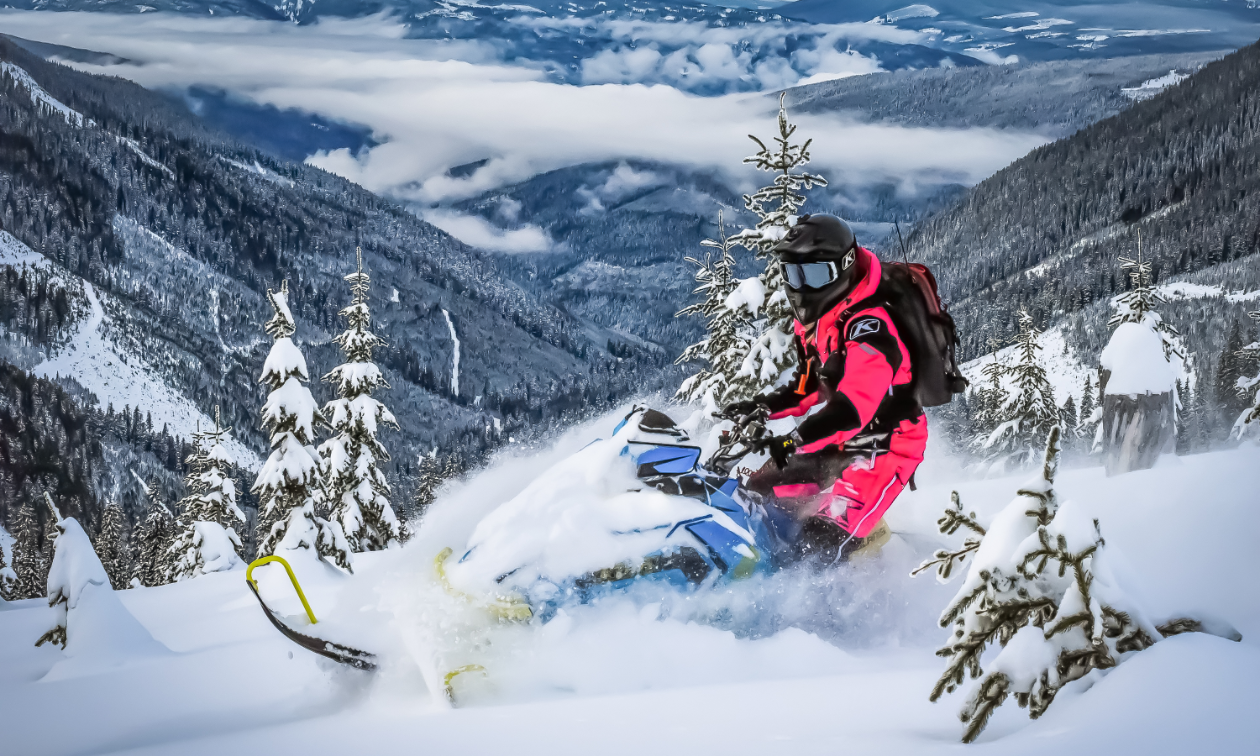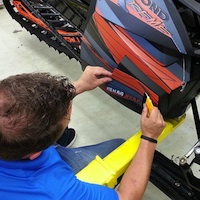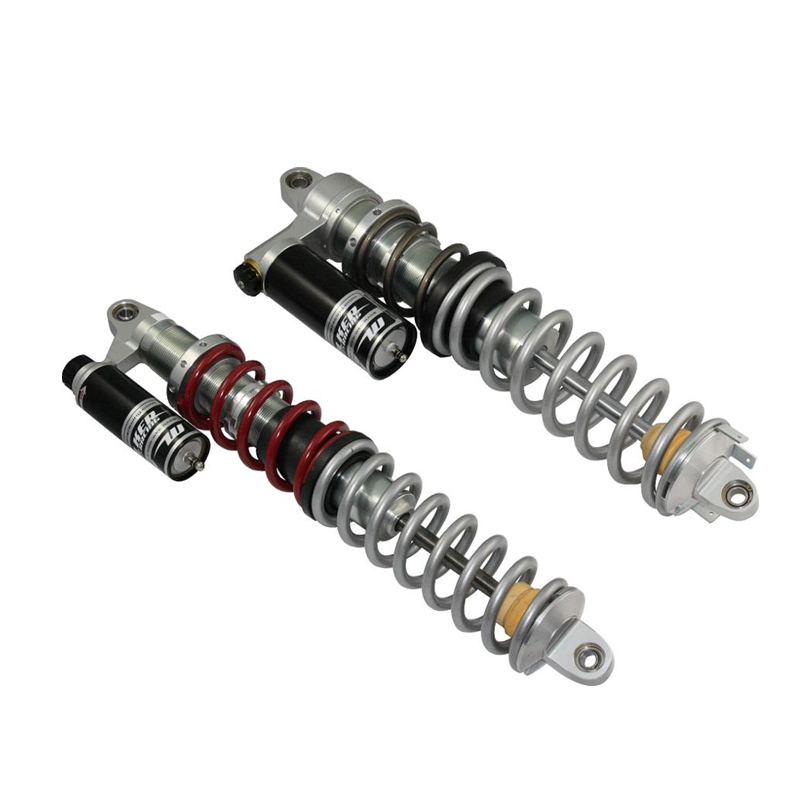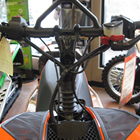Nothing can be more disheartening to a rider than engine failure—it's costly and sometimes season stopping. Here are some things to consider as a machine owner to ensure the longevity of your engine.
1. Use a high-quality fuel
A high-quality fuel is important. Most stock machines call for a 91-octane non-ethanol fuel to maintain the integrity of that motor. High-performance machines with aftermarket additions causing a higher compression—such as a turbo, big bores and aftermarket piston kits—sometimes need a higher octane of fuel.
If there is insufficient fuel running through the motor, this will cause the motor to run hotter—so hot, in fact, that it could burn down. The piston’s aluminum composition will melt and become stuck to the cylinder wall, causing the engine to seize. At that point it’s game over. The pistons and possibly the cylinders will need to be replaced.
Individuals who have fuel controllers and do not know how to properly operate them can find themselves in a sticky situation—if, in fact, they run their sled too lean. Same thing: a seized engine will occur.
2. Understand how your fuel controller works
It is an absolute must to know exactly what you are doing when programming a fuel controller. This most certainly isn’t a learn-as-you-go scenario, as the result could be a catastrophic failure for your engine. So take the time to learn the system and speak with the manufacturer and your local dealer to ensure complete understanding before you program a controller, such as the BoonDocker control box.
“If you know what you are doing, the BoonDocker box is an excellent choice for a fuel controller. If you don’t, then a Power Commander would be the way to go,” said Chris Gulbrandsen, owner of Parkland Motorsports in Stony Plain, Alberta.
The Power Commander has a variety of maps available—depending upon which manufacturer you are dealing with. The Power Commander is not adjustable on the fly, which lessens the amount of tinkering on the fly.
Parkland Motorsports is one of the most respected snowmobile modification shops around. Spending many seasons working with Polaris’s Liberty engine, the techniques Gulbrandsen uses have been tried, tested and true.
3. Use good oil
It’s important to use only high-quality oil for your snowmobile. Oil adds lubrication and facilitates optimum bearing performance. A high-quality synthetic oil ensures continuity in viscosity, thus creating a more stable lubrication system.
Some even suggest adding a bit of oil into the gas tank prior to each ride, as a little extra insurance that you are providing enough lubrication for your machine. Some feel the old style petroleum-based oils actually lubricate better but tend to gum up injectors and exhaust valves. Synthetic oils burn cleaner, keeping the entire machine running strong.
4. Let it warm up
This step is often forgotten. Upon cold start, ensure that your machine warms up to at least 100 F. Some say wait till 120 F before laying in the hammer. Letting it warm up allows the coolant to sufficiently circulate through the engine and literally for the engine to warm up—again creating optimum running conditions.
If you do not allow the machine to warm up, the result can be a cold seize. All metal expands with heat and contracts with cold. A cold seize occurs when the heat of compression expands the piston faster than the cylinder causing the piston to become stuck in the tight-fitting hole. So let your machine warm up, even if you’ve just stopped for lunch during your ride.
5. Keep it cool on the trail
Scratchers are a key component in the attempt to keep your engine cooler. They literally scratch up ice and snow into your tunnel, which is then transferred into your heat exchanger, thus helping to lower the temperature of the coolant running through the heat exchanger.
Especially important on hard-pack trails, scratchers will help preserve the life of your engine as they prevent the snowmobile from overheating.
6. Cast pistons versus forged pistons
Due to cost-effective mass production, most pistons are made from pouring liquid metal into a mould—cast to meet the specifications required. Most stock pistons are cast.
Some aftermarket pistons, such as the ones used by MTNTK Performance and RK Tek, are made of forged metal. Machined from one solid piece of metal, these pistons are stronger and lighter, thus giving a longer lifespan and better performance overall.
The MTNTK fix kit addresses piston failure that is common with some Polaris engines. The failure is caused by the piston clearance in the cylinder being ill-fitting and loose, allowing the pistons to rock in the cylinder bore. Piston slap is the result, as these pistons can scrape the cylinder wall, further deteriorating the integrity of the piston skirts and cylinder skirts.
In our personal situation, the piston skirt started to chip—a minute chip that was on its way to fracturing off a chunk of the piston. Catching this in time, we opted to swap out the stock pistons for our Polaris Pro-RMK with the MTNTK fix kit.
This kit is designed to eliminate piston slap by not only providing a better-fitting piston, but a taller piston incorporating a cylinder shim, reducing the piston’s tendency to rock in the cylinder bore. The better fit results in better compression with better performance and a much longer lifespan. It’s a win, win, win all the way around.
Cost analysis
It is much more cost-effective to do preventive maintenance than to have an engine blow, which can cost upwards of $5,000. A replacement piston kit can range anywhere from $350 to $400 for stock pistons, and depending upon options, can go up in price from there for aftermarket applications.
Pay attention to the miles on your machine and the realistic expectations of your particular unit. It’s not only performance that will indicate the need for attention. Many people claim their sled was running strong before it went down.
Some will notice the unit has trouble going into reverse or has a persistent bog, which can indicate engine problems. Either way, it’s better to be safe than sorry. Investment in your engine, of both time and money, can and will save you in the long run.







